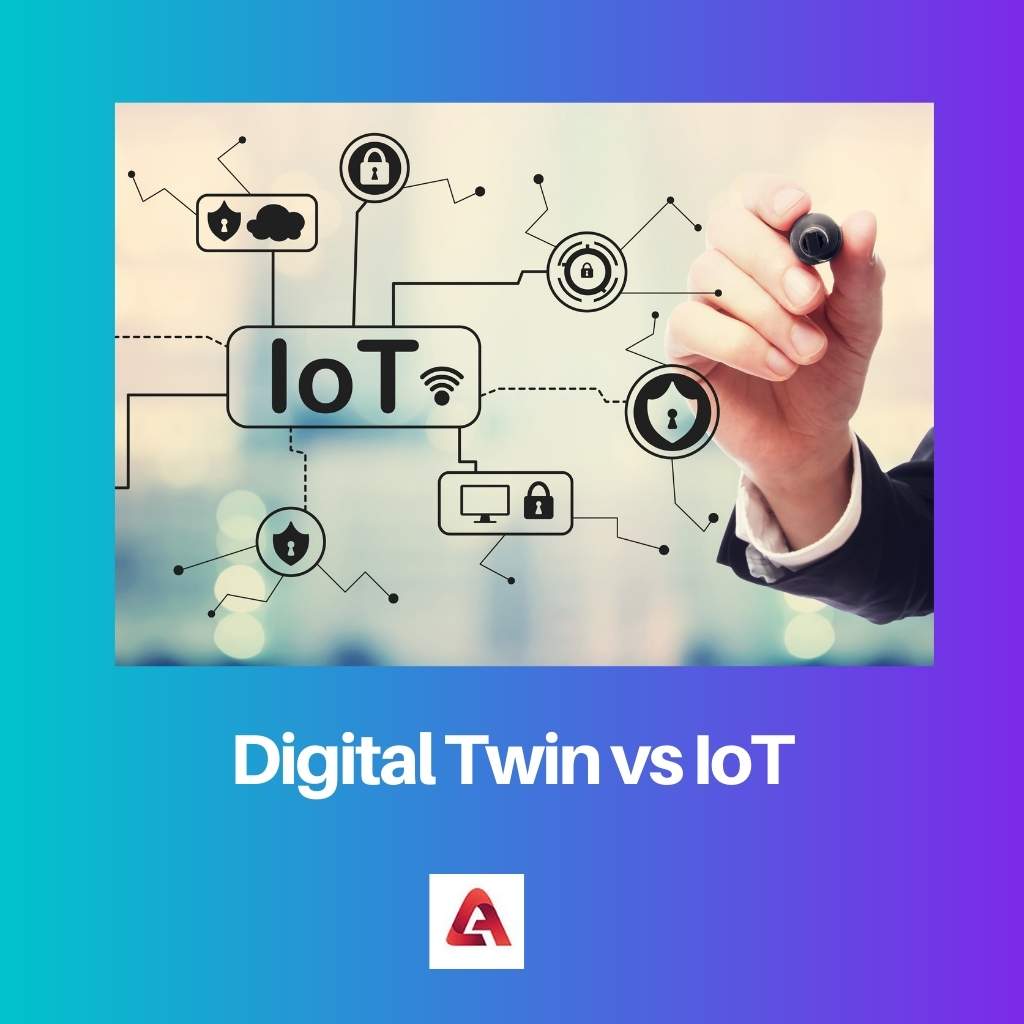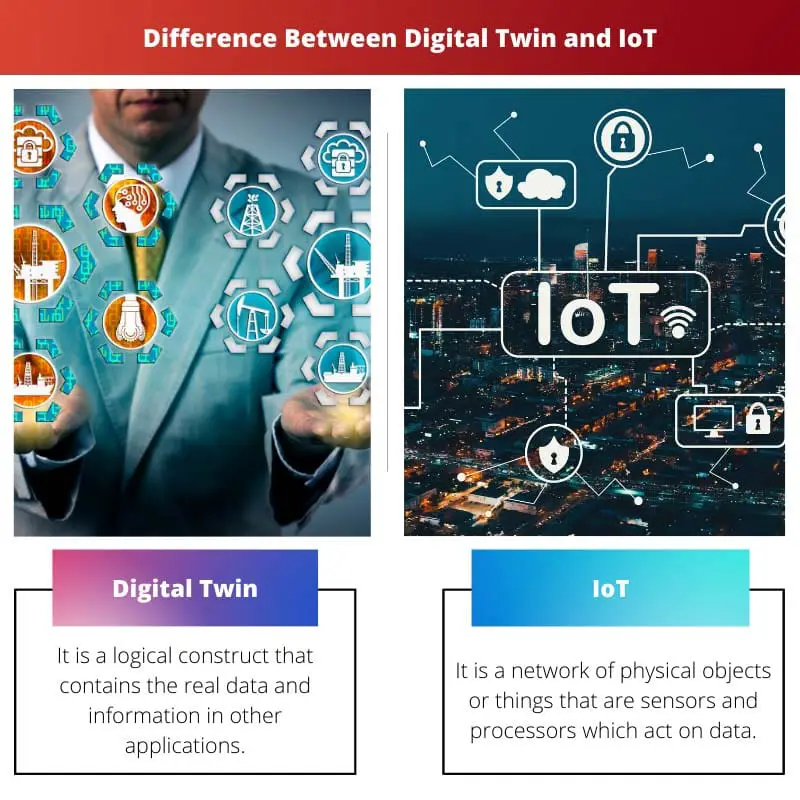In the digital world, connectivity is the most important thing. The interaction of humans with technology and the ways to bond the physical and digital modes is revolutionary.
Key Takeaways
- A digital twin is a virtual representation of a physical object or system that can be used for simulation and analysis. At the same time, IoT refers to the network of connected physical objects that can exchange data.
- Digital twins are used for product design and development, while IoT is used for real-time monitoring and control of physical objects.
- Digital twins are created before the physical object exists, while IoT devices are added to an existing physical object.
Digital Twin vs IoT
A Digital Twin is a digital representation of a physical object, service, process or environment, and it looks and acts like its counterpart in the real world. IoT stands for Internet of Things and is a network of physical objects that are embedded with sensors, technologies and software to exchange data with devices.

The entire planned module with exact procedures can be replicated in real-time and helps in the identification of any shortcomings or faults.
While IoT is widely used in smart home technological appliances, it refers to the exchange and connection of data to other devices and systems over the internet.
Comparison Table
| Parameters of Comparison | Digital Twin | IoT |
|---|---|---|
| Definition | It is a logical construct that contains the real data and information in other applications | It is a network of physical objects or things that are sensors and processors which act on data |
| Origin | First described by David Gelernter in 1991 and first used by NASA in 2010 | The first application of IoT was in a drink vending machine at Carnegie Mellon University in 1982 and was declared by Peter T. Lewis in a speech in 1985 |
| Types | Digital twin consists of three types – the physical product, the digital or virtual product, and the connection that is established between the two products | IoT network consists of four types – cellular, local, and personal areas networks (LAN/PAN), Low Power Wide Area Networks (LPWAN) and Mesh Networks |
| Characteristics | Enhanced connectivity, homogenization of data, reprogrammable, leave digital traces which helps in diagnostic of the problems, modularity, and customization of the products and modules | Intelligent features with networked architecture, decentralization, complex, and consideration for size and space |
| Applications | In industries like manufacturing, urban planning and construction, healthcare industry, and even in the automotive industry | In smart home devices and consumer applications, and the industry like medical and healthcare, logistics, communication, manufacturing, agriculture, food, and maritime operations |
What is Digital Twin?
A digital twin is a representation that caters to real-time counterparts in virtual and digital forms. The representation is of a physical process or object.
Though the digital twin was introduced by David Gelernter in 1991 in his book Mirrors Worlds, the digital twin was first used by NASA in 2010 to improvise the physical model simulation of a spacecraft.
The subject can be further classified as digital twin prototype (DTP), digital twin aggregate (DTA), and digital twin instance (DTI). It can also be divided into different integration levels.
The digital twin has characteristics like enhanced connectivity, homogenization of data, programmability, and digital traces, which help in the diagnostic of the problems, modularity, and customization of the products and modules.

What is IoT?
IoT stands for Internet of Things. It refers to the objects that can exchange and connect data to other devices and systems over the internet.
The first application of IoT was in a drink vending machine at Carnegie Mellon University in 1982, and thereafter, the field gained momentum.
IoT even has several threats and risks because companies mostly collect data from several sources, and the place of storage is a cloud network, which is a vulnerable spot.
IoT even has the potential to create new models for civic engagement. The best example of IoT is the consumer applications in smart home technology, which can analyze various parameters and provide instant solutions.

Main Difference Between Digital Twin and IoT
- The digital twin has originated in 1991, while IoT has originated in the year 1982.
- Digital twin consists of three types – the physical product, the digital or virtual product, and the connection that is established between the two products while IoT network consists of four types – cellular, local and personal areas networks (LAN/PAN), Low Power Wide Area Networks (LPWAN) and Mesh Networks.





